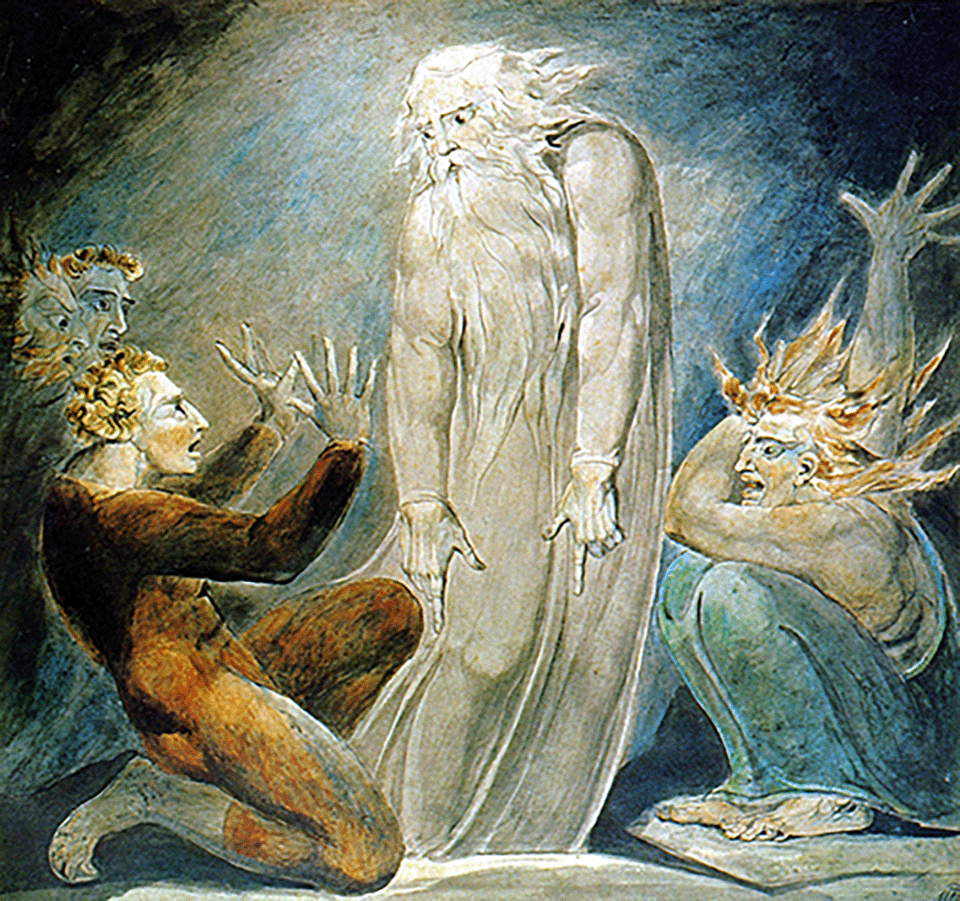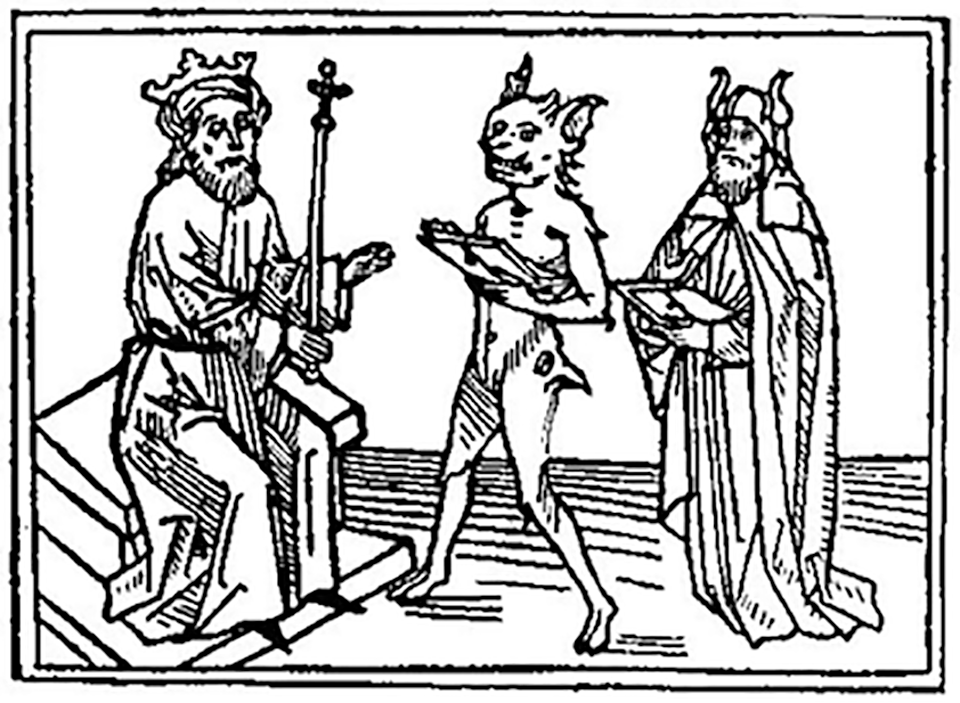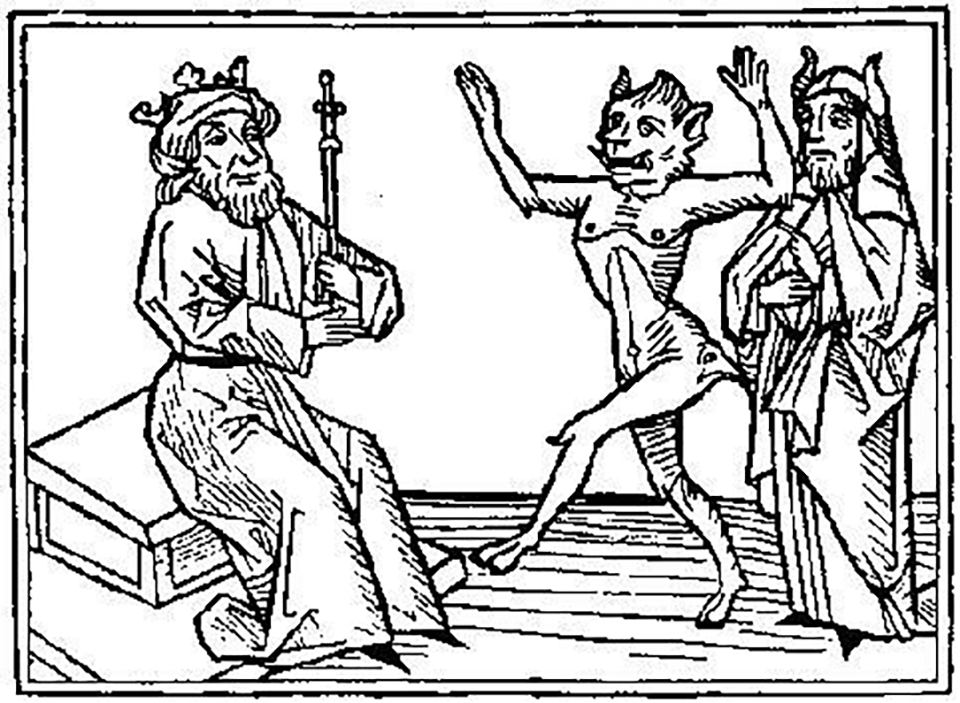You may have noticed I’m fond of the Bard. Well, who wouldn’t be. So many of our modern idioms are borrowed from the pages of his plays and poems (or from a certain religious text he may have worked on for James I ). This particular passage (unfortunately from Romeo and Juliet ) pertains to our human tendency to judge things by the labels we apply.
Shakespeare is also very much responsible for our characterization of witches. His Wyrd Sisters and their delightful cooking show have been borrowed by everything from Bugs Bunny to Harry Potter to Doctor Who. The modern association of Hecate as the Goddess of the Witches may even trace to her appearance in the Scottish play.
Perhaps lesser known is his nigh prototype of the lone wizard, Prospero, in the Tempest, and his workings with the elementals and nature spirits. But here, of course, Prospero is the hero, or at least a redeemed antagonist. Not so for those labeled witch.
Don’t get me wrong. Prospero is engaging in things that Elizabethan era folks would have considered dangerous, if not inherently evil. Remember that Dr. John Dee was only recently traveling about the Continent conversing with spirits to the delight of the Crowned Heads of Europe. Prior to his dalliance with the departed, Dee had been the official astrologer to Elizabeth I. He is said to have prophesied her ascension to the throne while she was a prisoner in the Tower at the orders of her half-sister Mary. This act would have been considered treason, as any prognostication regarding the rise of a new monarch essentially predicts the fall of the reigning one.
James Stuart succeeded Elizabeth to the throne in 1603 and took over as Sweet Will’s chief patron. Prior to that promotion, he was King James VI of Scotland. In 1589 he’d married by proxy Anne of Denmark, whom he awaited in Edinburgh. But storms prevented her arrival. Here ship, badly damaged was forced to put ashore in Norway, where James went to fetch her. He finally succeeded although his own journey was frought with perilous weather.
Weather that had, according to the Danish authorities, been the result of a witch conspiracy.
Said witches were thence discovered, tried, and executed in Copenhagen. This apparently was somewhat common.
While witchcraft was technically illegal in Scotland, James hadn’t been a zealous prosecutor of the laws. Until the threat to his wife, which was also a threat to his future children, his dynasty, and therefore his throne. So we’re now talking treason.
James himself penned Daemonlogie in 1597, which was one of the earlier witch-hunting manuals. Like many people in the 16th century, he was a strong believer in the truth of witchcraft. He saw it as evil, pure and simple.
And that religious book that Shakespeare may have worked on for James had a pretty basic rule for dealing with it.
“Thou shalt not suffer a witch to live.”
This one sentence is responsible for untold suffering and bloodshed. It’s what justified the Puritans in putting people to death in Salem almost a century later. It continues to hop up in evangelical sermons in the 21st century.
Witchcraft had been a sin in many cultures going way, way back. The use of baneful magic is recorded in things like the Leyden Papyrus and other of the Greek Magical Papyri. In pre-Christian times, the general practice was to employ countermeasures, such as amulets and charms, obtained from a temple or helpful sorceror. Spells and curses exist in the hieroglyphic record and the clay tablets of Mesopotamia. We’ve been at this a while.
The directive to kill witches is attributed to Moses, and supposedly came directly from God HIMself. And yet this directive seems to have been little enforced among the Israelites as they struggled to take over Canaan and establish themselves as the power in the region. King Saul having banished those “having familiar spirits” from his territory then seeks out the Witch of Endor, in order to raise the spirit of the dead prophet Samuel.

Saul sought out the witch (at right) in defiance of a ban on sorcery, because God would no longer take his calls. Samuel’s message then, is not just that Saul is going to die in battle on the morrow, but that he has lost the favor of heaven, and is thus ultimately doomed in the afterlife as well.
So not only is he ignoring the dictum of the Lord God Almighty, he’s actively engaging in necromancy and disturbing the spirit of a holy man. As you may know, it doesn’t end well, for Saul (as Samuel tells him) but the witch gets off in the end. She had extracted an oath that he would do her no harm…which he swears to the God that forbade witches.
Politics and witchcraft are strange, but old bedfellows.
It’s said that Conservative Republican paragon Ronald Wilson Reagan1Reagan’s name of six letters each was also believed to be proof he was Anti-Christ. People actually believed this in the 1980s. paid more attention to his wife’s astrologer than he did his cabinet. Well, I can hardly blame him for that. Maybe if he’d kept counsel with stars he wouldn’t have got into Iran/Contra.
I can’t help but wonder what his buddy the Reverend Jerry Falwell would have thought about that. As one of the chief architects of the so-called Satanic Panic and one of the most universally intolerant human beings to ever live, surely he would have objected to Reagan’s flirtation with the Devil.
Then I recall that Falwell, like many of his peers and followers, was probably a raging hypocrite.

Solomonic magic is an adaptation by the urban magician to legitimize his consorting with Dark Forces. Compelling demons (and sort of compelling angels) by the name of God Almighty was clearly acceptable behavior. This potentially provided protection from the Inquisition or other instruments of the Church that was cracking down on alternative points of view.

It’s a German translation of Consolato peccatorum, seu Luciferi contra Jesum Christum. The ponderous title is an early Christian tract by Jacobus de Teramo written around 100 years before, concerning a lawsuit brought by Lucifer against Jesus, for trespassing in Hell on his way to the Resurrection.
The title character Belial is the Infernal One’s attorney. Solomon, by virtue of his reputed wisdom, is here shown in his role as judge.
The story, later a banned work, was one of several early Christian writings that were meant to explain or address certain theological questions. Spoiler alert: Jesus wins the lawsuit. But it did establish that Satan owned the souls of the damned after the Last Judgement, which seems to have satisfied him and pleased a great number of Renaissance painters.
Yet this serves as a reminder and a warning that persecution is neither dead nor long buried in the distant past. We didn’t call it the Satanic Panic in my youth.
Growing up in rural Appalachia, I actually heard sermons pronounce that Catholics ate babies. When reading books outside of school might mark you as a “dope-smoking, devil-worshipping queer” oppression of differently minded individuals was hardly a new thing. If you played Dungeons and Dragons, you were going straight to Hell.

One brief encounter with the non-trademark violating version of the game and Tom Hanks became a rabid cross-dresser! Beware! Lock up your children. And for God’s sake don’t let them read or do math.
While today’s TV preachers are peddling a more upwardly mobile brand of snake-oil, the threat is by no means over. Prattling busy-bodies appear on college campuses terrorizing young people who may never have been out on their own. They tell them they’ll go to hell for wearing short pants or majoring in the arts. It would be laughable, but there’s always someone who buys into it.
Trolls on social media routinely harass and report witchcraft accounts, in the name of religion. While Wicca is a recognized, and theoretically protected religion on it’s own, witchcraft does not have a similar legal status. So these people can do pretty much whatever they want. “Report and ban” has become the tool of the oppressor, and social media companies, terrified of bad press, comply by closing accounts without much investigation.
We’re in the midst of a social and economic upheaval right now. It’s entirely possible that someone, somewhere, will start blaming this all on witchcraft. It’s happened too many times before to ignore the possiblity.
In the 80s public witchcraft simply didn’t exist outside of a few shops in the major cities. And yet people readily believed there was a secret widespread Satanic conspiracy. Witches weren’t out and proud then, and the people who were out and proud were dying of a mysterious illness that preachers like Falwell said was divine punishment for the sin of homosexuality.
It’s great to live in a time when we can speak openly about alternative lifestyles and spiritual beliefs. I continue to hope for a world like the one in the old Star Trek series, where there was no want and no war and all of us were accepted for what we were, without reservation.
But I am not sure I’ll see it in my lifetime.
Keep fighting the good fight, children. But stop every now and then and look over your shoulder. That mob with the torches and pitchforks is back there, always, waiting for a chance. They’re ready to let their fear and hatred bury you. So don’t let your guard down.
Thank you for reading this week’s ramblings. I hope you found them enjoyable. Come back next week for another round.


This was excellent! My eyes ate up every word with a delightful esoteric glee. Thank you, for so aptly covering so much history & mystery in just a short blog. A pleasure to read. Huzzah!
Thank you so much for your encouraging words. I am beginning to, I think, find my voice after a long period of silence. I hope to retain your interest in future articles. And thank you for sharing.